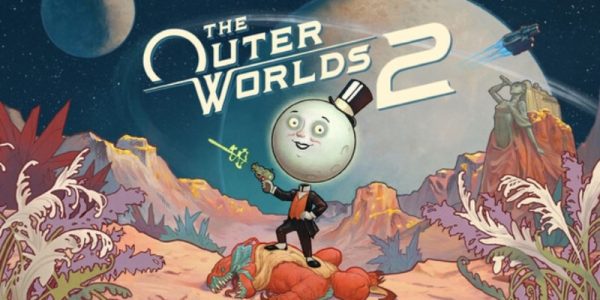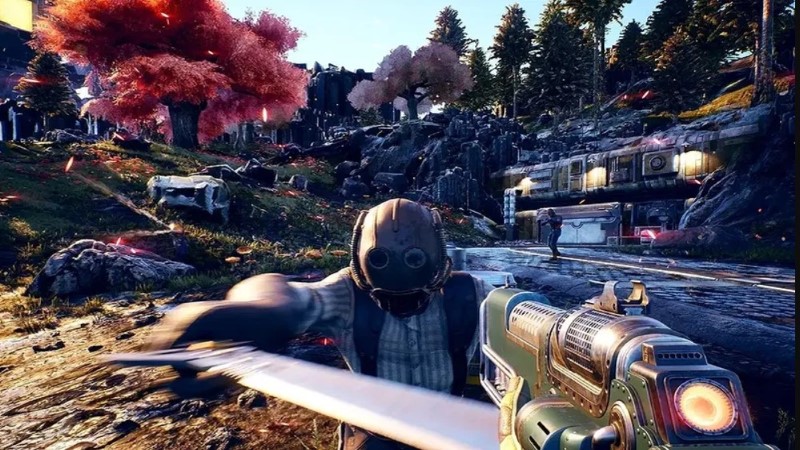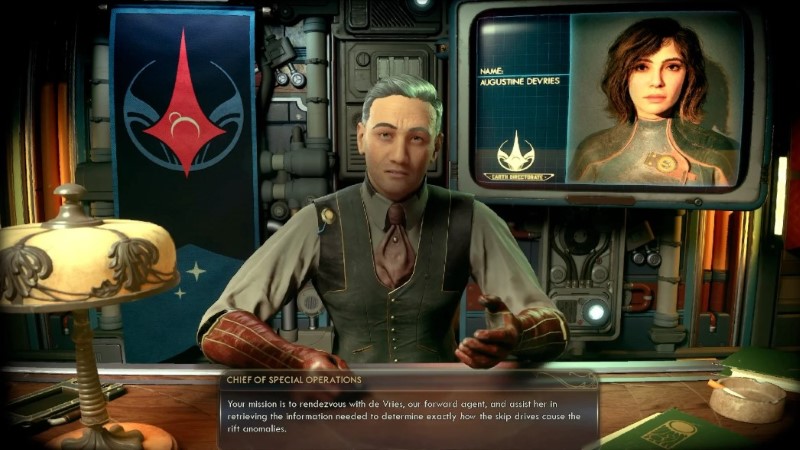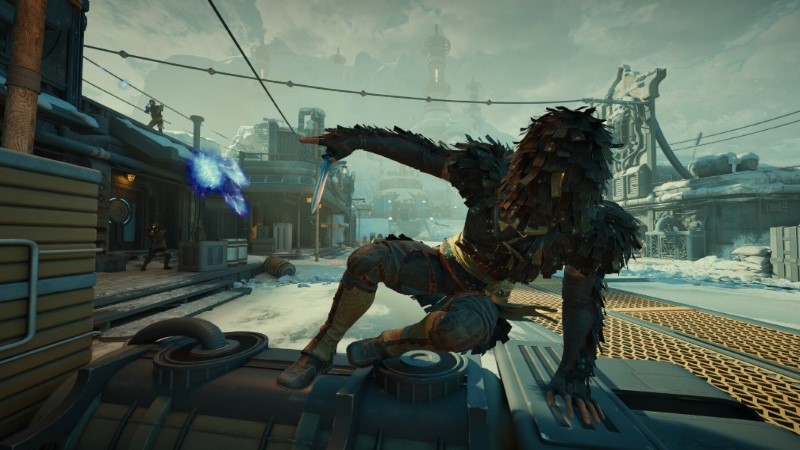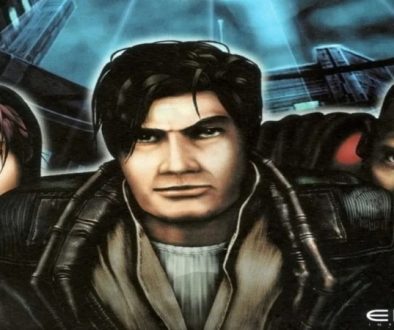The Outer Worlds 2: Everything to Know About the Sci-Fi RPG Sequel
Quick FAQ: The Outer Worlds 2
Q: Where to download The Outer Worlds 2:
A: You may download The Outer Worlds 2 digitally from Steam, PlayStation Store, and directly into your Xbox Series console.
Q: Do I need to play the first Outer Worlds to understand the second game?
A: Not necessarily. The Outer Worlds 2 features a new star system, new crew, and an independent storyline. Playing the first game will enhance your understanding of the universe and humor, but it’s not required.
Q: Who developed The Outer Worlds 2?
A: The game was developed by Obsidian Entertainment, the same studio behind the original The Outer Worlds, Fallout: New Vegas, and Avowed.
Q: How long does The Outer Worlds 2 take to beat?
A: Based on the first game, the average player can expect 15–20 hours for the main story, and 25–35 hours for completionists, depending on side quests and exploration.
Q: What platforms is The Outer Worlds 2 available on?
A: Confirmed platforms include Xbox Series X|S, PlaySTation 5, and Windows PC.
Q: Is The Outer Wolrds 2 available on Game Pass?
A: The Outer Worlds 2 is a day-one Xbox Game Pass title (such as Game Pass Ultimate, as well as PC Game Pass)..
Q: Do my choices in The Outer Worlds 1 affect the sequel?
A: No. The sequel features a new cast, new setting, and standalone story, so previous save files will not carry over.
Q: Does The Outer Worlds 2 support character creation again?
A: Yes. Like the first game, players can create their own character with customized skills, attributes, and perks.
Q: Outer Worlds 2 minimum PC specs:
Processor: AMD Ryzen 5 2600 / Intel i5-8400
GPU: AMD RX 5700 / Nvidia GTX 1070 / Intel Arc A580
RAM: 16GB RAM
Storage: 110GB of hard drive storage
The Outer Worlds 2 is finally here, and as a huge fan of the original game, I’m thrilled to report that it recaptures and expands upon what made the first Outer Worlds special.
For those unfamiliar, The Outer Worlds (released in 2019) was a surprise hit with a witty, Fallout-style space RPG developed by Obsidian Entertainment. It charmed players with its dark humor, corporate satire, and memorable characters.
Now, with The Outer Worlds 2, Obsidian (led by RPG legends Leonard Boyarsky and Tim Cain, the original Fallout creators) returns to that universe on a bigger scale.
Boyarsky is back in the director’s chair, joined by co-director Brandon Adler, while Tim Cain consulted on the project. In short, the sequel comes from the same creative minds, but with the backing of Xbox Game Studios this time around. And you can really feel that extra polish and ambition in the final product.
I still remember the cheeky announcement trailer at E3 2021 as it hilariously broke the fourth wall, joking that the developers had “nothing to show yet” except a title. That self-aware humor set the tone perfectly. Fast-forward to now (late 2025), and The Outer Worlds 2 has launched on PC, PS5, and Xbox Series X/S.
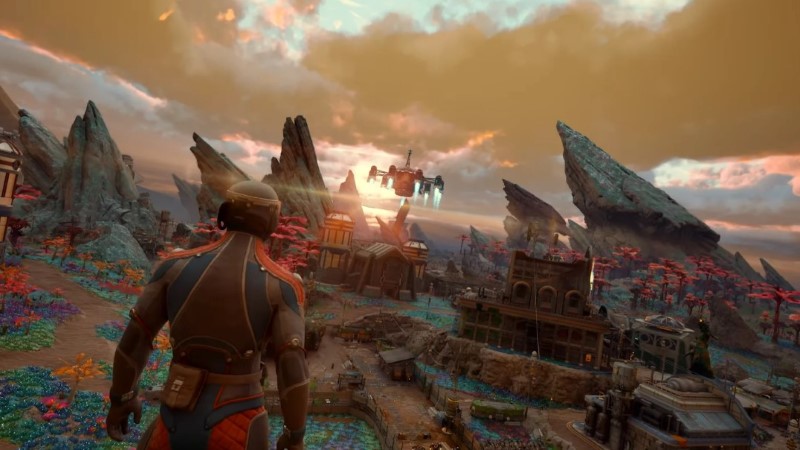
As someone who adored the first game’s blend of space-western adventure and snarky comedy, I went into the sequel both excited and a tad anxious. Would it live up to The Outer Worlds 1? Let’s just say: Obsidian didn’t let us down.
In this blog post, I’ll break down everything you need to know about The Outer Worlds 2: from its story and characters to the gameplay changes and how it sets itself apart from the beloved original.
So grab some Saltuna (it’s Spacer’s Choice™!) and let’s dive in.
A New Frontier: Story and Setting in The Outer Worlds 2
The Outer Worlds 2 takes place in the same universe as the first game but in an entirely new star system, giving us a fresh story that newcomers can jump into without needing to have finished the original.
The first Outer Worlds was set in the Halcyon colony and centered on a colony ship and corporate conspiracies. This time, we’re headed to the Arcadia Colony, a distant and wealthy star system that has been cut off from Earth. The premise immediately hooked me: you play as an Earth Directorate agent sent to Arcadia to investigate mysterious space-time rifts that are tearing the colony apart.
These rifts are basically catastrophic anomalies punching holes in reality. So, not exactly a routine assignment for our “most likely good-looking” protagonist (as the game’s own tongue-in-cheek description calls you).
Arcadia might be a new locale, but it retains that Outer Worlds flavor of a retro-futuristic, hyper-capitalist dystopia. The series’ alternate history lore is still in effect: mega-corporations run the show because in this timeline, the robber barons were never stopped in the 1900s.
So humanity’s colonies are capitalist nightmares (or dreams, if you ask the CEOs) full of neon advertisements, cheesy propaganda, and absurd sci-fi technology. In Arcadia, the central conflict revolves around factions vying for power amid the chaos of the rifts. On one side, there’s The Protectorate, a totalitarian government that monopolizes faster-than-light travel and claims to benevolently “protect” the colony.
Opposing them is Auntie’s Choice, a megacorporation formed by the merger of two big companies from game one: Auntie Cleo’s (a pharma company) and Spacer’s Choice (think Walmart in space, known for its grinning moon mascot).
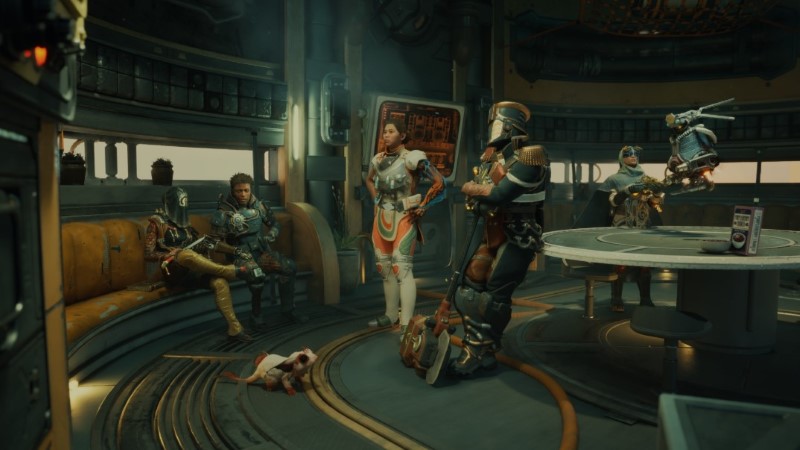
Auntie’s Choice basically launches a corporate invasion of Arcadia, looking to break the Protectorate’s control over FTL travel and seize those lucrative trade routes for themselves.
Caught in between is a fanatical religious faction known simply as The Order, which has its own secretive agenda regarding the rifts and the colony’s future. And let’s not forget a fringe cult called The Glorious Dawn who worship these rifts as divine phenomena.
Basically, Arcadia is a powder keg of competing interests, and you’re dropping right into the middle of it. Lucky you.
As an agent of the Earth Directorate, you’re technically there as a neutral intermediary (Earth’s government wants to know why Arcadia has gone radio-silent). But in classic RPG fashion, neutrality is tough to maintain. The story quickly forces you to navigate this web of corporate greed, authoritarian control, and zealous rebellion.
I won’t spoil major plot points, but expect plenty of tough decisions about which factions to side with (if any). The Outer Worlds 2 continues the series’ tradition of branching narratives and player choice.
Depending on who you ally with (be it the oppressive Protectorate regime, the scheming Auntie’s Choice execs, or perhaps a third path like supporting the Order’s cause) the ending and the fate of Arcadia will change.
I always appreciate when my choices meaningfully impact the world, and by all accounts this sequel doubles down on that aspect. In my playthrough so far, I’ve already seen the colony react to my actions; one faction tried to assassinate me after I betrayed them in a quest. It’s thrilling to feel like the decisions I make (and even the distractions I pursue) can ripple into big consequences.
Tonally, The Outer Worlds 2 manages to balance high stakes with irreverent humor. The main storyline, which involves investigating reality-bending rifts and preventing galactic destruction, is actually a bit grander and more serious than the original game’s plot. There’s an undercurrent of political intrigue and sci-fi mystery that feels more urgent this time around.
Early on, there’s almost a Mass Effect vibe as you race to figure out what (or who) is causing these rifts before everything falls apart. Yet, in true Outer Worlds fashion, the game never becomes too grim. Dark, sarcastic comedy is embedded in every corporate training video, NPC dialogue, and quest description. I’ve chuckled at the satirical advertisements plastered around
Arcadia’s cities, and even during tense moments characters will drop a well-timed joke. This franchise has always been great at skewering corporate culture and excess, and that continues here.
One minute you’re contemplating the morality of siding with a repressive government, the next you’re laughing at a hapless guard complaining about their substandard Spacer’s Choice ammunition (“it’s not the best choice, it’s Spacer’s Choice!”).
The mixture of drama and comedy feels very Outer Worlds, and it’s nice to see that the sequel didn’t lose that identity even as it introduces a bigger story.
Meet the New Crew: Characters & Companions in Arcadia
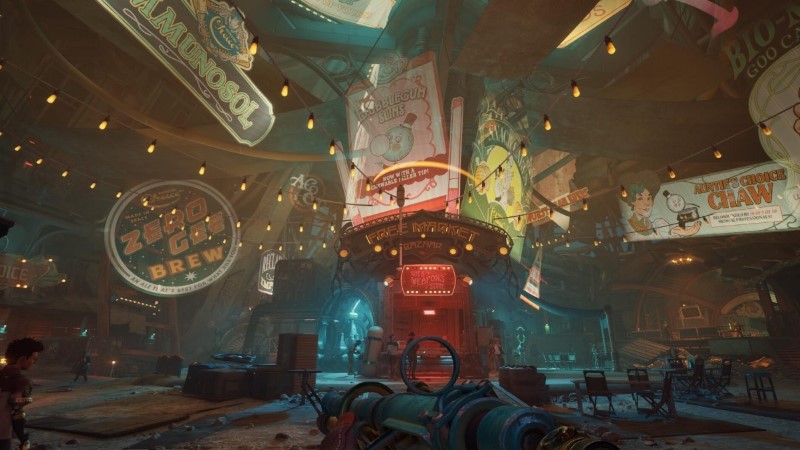
The Outer Worlds 2 introduces a brand-new cast of characters to accompany you on your space-faring adventure, and they are a colorful bunch, to say the least. Fans of the first game might be wondering: can anyone live up to companions like Parvati, the adorable and brilliant mechanic from Outer Worlds 1?
The answer is, the new crew certainly tries, and they bring plenty of personality (and opinions) to the table. In total, there are six recruitable companions in Outer Worlds 2, each hailing from a different faction or walk of life in Arcadia.
This diversity isn’t just for show; it leads to some spicy inter-party banter and even conflicts. In fact, Obsidian really leaned into the idea that your companions have their own agendas; if you make choices that clash too hard with a companion’s beliefs, they can turn on you or even leave.
No kidding, the stakes in your crew relationships are higher now, which makes role-playing your ethos even more engaging (and a bit nerve-wracking if you hate to disappoint your virtual friends!).
Let me introduce a few of these misfits (minor early-game character spoilers ahead). First up is Niles, your fellow Earth Directorate agent and the first companion you’ll meet. Niles is a likable, somewhat grizzled gunslinger with a strong moral core, given that he joined the Directorate to help the downtrodden.
In practice, that means he’s not a fan of either the corrupt corporations or the authoritarian Protectorate. He’s basically your classic good-guy cowboy, always ready to stick up for the little people. I found Niles to be a comforting presence in the early hours; he’s the closest thing to having a buddy cop partner on this mission, and he often chimes in with a weary joke or a word of advice.
Gameplay-wise, Niles has a handy ability to taunt enemies and draw fire (he challenges foes then unloads three shots into them). This makes him a great tank, which saved my hide during tougher fights.
Alongside Niles, you’ll also quickly acquire V.A.L.E.R.I.E (or just Valerie for short), who is an Automech (a robot) working with the Earth Directorate. If you enjoyed ADA (the ship computer) in the first game, Valerie scratches a similar itch: she’s full of dry, robotic wit and occasionally throws out one-liners with a charming beep-boop delivery.
Valerie is more of a support unit in combat; her special move launches a volley of healing syringes at you and your allies. I’ve come to rely on Valerie’s help during messy battles, and I admit I laugh every time this floating droid says something snarky in her calm, computerized tone.
She doesn’t have a huge personality (think of her as a less chatty companion unless spoken to), but she’s dependable and frees you up from having to gobble health pills constantly.
As you venture deeper, you start recruiting companions who represent Arcadia’s native factions. Inez is one such character, an ex-super-soldier from Auntie’s Choice. She has a rather tragic backstory: Inez was part of an experimental “grafting” program to implant extra limbs and abilities in soldiers.
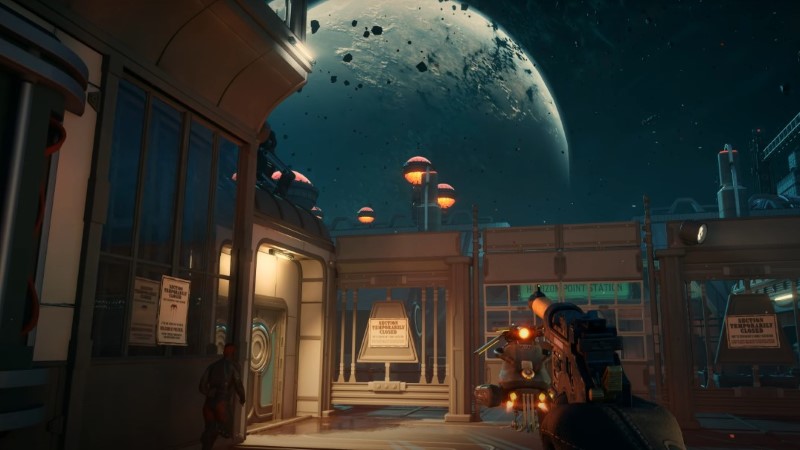
Most of her squad died from the procedure, and Inez herself is left with a tiny, useless arm grafted onto her back (yep, she has an extra little arm sticking out, which is both sad and darkly funny).
Despite being burned by her corporate overlords, Inez remains fiercely loyal to Auntie’s Choice, believing in the company line that the merger will save Arcadia.
This puts her at odds with more anti-corporate teammates like Niles and Tristan (we’ll get to him in a second). Inez doesn’t start with a combat ability due to her “failed” graft, but interestingly, by doing her personal quest, you get to choose a new ability for her, basically determining how she overcomes her flaw.
In my game, I helped Inez track down some monstrous test subjects to avenge her fallen comrades, and the outcome let me pick a powerful new skill for her (either a defensive cloaking/healing trick or an offensive blast, depending on a choice). It’s a neat bit of character development tied into gameplay.
Now, Tristan might be my favorite companion conceptually: he’s an Arbiter for the Protectorate, essentially an elite enforcer who acts as judge, jury, and executioner in that regime. Picture a big armored guy with a hammer, radiating lawful authority…that’s Tristan.
On paper, he sounds scary (and he can be, when he’s smashing enemies with that hammer charge of his), but personality-wise he’s a hoot. Tristan has a strong sense of justice and truly believes in order and law, yet he’s not a one-dimensional zealot. In fact, he’s often confused or disillusioned by the cruelty and bureaucracy of the Protectorate.
This leads to some genuinely funny moments where Tristan’s rigid “rules are rules” attitude clashes with reality. He’s kind of a lovable oaf in his obliviousness, often delivering unintentionally hilarious deadpan lines.
I didn’t expect a member of the evil empire faction to be comedic relief, but Tristan pulls it off. And despite his allegiance, he’s notably anti-corporation, so he and Inez bicker frequently. I’ve had to play peacekeeper on my ship more than once. It creates an almost sitcom-like dynamic onboard, and I’m here for it.
Rounding out the crew, we have two more complex characters: Marisol and Aza. Marisol is an older woman you encounter under false pretenses; she initially disguises herself during a quest, and it’s possible to miss recruiting her (or even kill her by accident) if you don’t play your cards right. If you do recruit her, you learn Marisol is part of The Order, that religious sect with assassin tendencies.
She’s polite and grandmotherly on the surface, but she has a long history of doing dirty work for her cause. I’ve found Marisol intriguingly two-faced; one moment she’s offering you homemade cookies (seriously), the next she’s coolly discussing the most efficient way to eliminate a target in the name of the “grand plan.” She’s not as gleefully bloodthirsty as the next companion I’ll mention, but Marisol is definitely one of those “sweet old lady who will 100% stab you if needed” characters.
Her companion ability is extremely powerful for strategic players: she can immobilize an enemy with a gadget, essentially freezing a target in place and making all hits on them crits. It’s ridiculously useful against boss enemies or tough creatures, especially if you like to combo for big damage.
Finally, there’s Aza, who is probably the most extreme personality of the lot. Aza is a member of The Glorious Dawn cult, the folks who worship the rifts. To put it bluntly, Aza is a sadist; she loves inflicting pain and violence, and she’s quite unapologetic about it. However, she’s not your typical mindless psycho; Aza has a code of sorts.
In her view, if you’re going to be evil or violent, you should do it “properly” and with style. Her dark, deadpan humor actually made me warm up to her (in a “I wouldn’t want to be left alone in a room with this person” kind of way). I recruited Aza by freeing her from a jail cell where she’d been locked up for, well, causing mayhem.
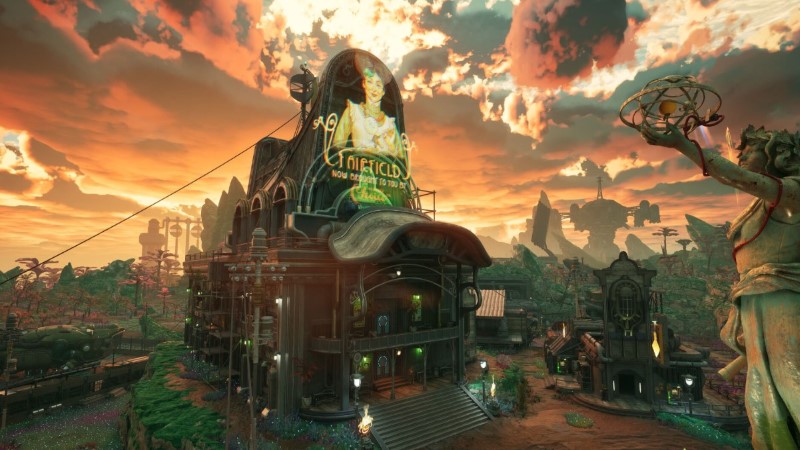
From that moment, she’s been an absolute riot, constantly egging me on to take the more chaotic or cruel approach to situations.
I sometimes take her out on missions just to hear her nihilistic commentary; it’s both disturbing and strangely funny how enthusiastic she gets about combat. Speaking of which, Aza’s ability involves firing an explosive cluster from her wrist gadget, doing big area damage. It even has multiple charges, so she can really wreak havoc in a fight.
She’s a bit of a glass cannon (not super durable), but if you want to unleash carnage, Aza’s your gal. Just… don’t expect a warm and fuzzy friendship with her. I often feel like I’m keeping a volatile weapon as a companion. But hey, it’s effective!
Overall, I’ve been impressed with how distinct each companion is, both in combat utility and in personality. Their interactions add a lot of life to the game. They’ll chime in during conversations and even argue with each other based on my choices.
It keeps me on my toes, knowing that picking a side in a quest might genuinely alienate one of my crew. (I haven’t had anyone outright leave yet, but I’ve heard it can happen if you really push them too far.) One thing to note: there are no romance options with companions, continuing Obsidian’s trend from the first game. Personally, I’m fine with that, since the relationships here are more about camaraderie and ideology than smooching.
In fact, some early interviews indicated the devs wanted to focus on deep companion friendship and loyalty quests instead of romantic subplots. And it shows: each companion has a robust personal quest line and lots of dialogue that reveal their backstories. As a story-driven player, I love digging into these arcs.
Whether it’s helping Niles come to terms with a failed mission or encouraging Aza to maybe, just maybe, show mercy once, the companion quests have been highlights for me so far. They also tie into gameplay in cool ways (like Inez’s quest letting you choose her new skill, or Marisol’s recruitment requiring a specific choice).
Compared to the original Outer Worlds, I’d say this new crew stands toe-to-toe in quality. I will admit, I still have a soft spot for Parvati and some of the original companions, as they felt a bit more instantly endearing.
The Outer Worlds 2 companions are perhaps more complex and conflicted, which is great for storytelling even if it means it took me longer to truly “bond” with them. Some critics have noted that a couple of the new companions aren’t as unforgettable as the old gang, but others found them more interesting due to the inter-faction drama they bring. From my perspective, by the time I’d spent several hours with each, I was invested.
And the banter is top-notch; I’ve laughed out loud hearing Valerie the robot sass Aza about her “inefficient bloodlust,” or Tristan trying to understand a crude joke Niles made. If you play these games for the party interactions (like I do), you won’t be disappointed.
Gameplay Evolution: What’s New (and Improved) in The Outer Worlds 2
While the story and characters are huge for me, I know a lot of gamers are curious how the gameplay in Outer Worlds 2 stacks up against the first. The good news is that Obsidian took a “if it ain’t broke, polish it and make it bigger” approach.
At its core, this is still a first-person (or optionally third-person) action-RPG with a mix of shooting, melee, dialogue, and exploration. The fundamentals will feel familiar to any Outer Worlds or Fallout: New Vegas fan; you create a character with various skills (like Persuasion, Science, Lockpicking, etc.), you go on quests in semi-open-world areas, and you can approach situations with guns blazing, smooth-talking, or any number of creative solutions.
However, The Outer Worlds 2 brings a host of refinements and new features that make the experience even better.
First off, the combat has gotten a serious upgrade. One of the first things I noticed was how much smoother and more dynamic movement feels. The first game’s combat was serviceable but a bit stiff; here, movement and gunplay are crisper, almost bordering on a shooter feel at times.
You can now slide (as seen in many trailers/screenshots of the player character sliding away from explosions in style), and overall the action is faster-paced. There’s a greater variety of weapons too, from zany science guns to beefy conventional firearms. I picked up a new plasma sword early on that ignites enemies with a satisfying whoosh, and the gunplay just feels more impactful with better feedback and hit reactions.
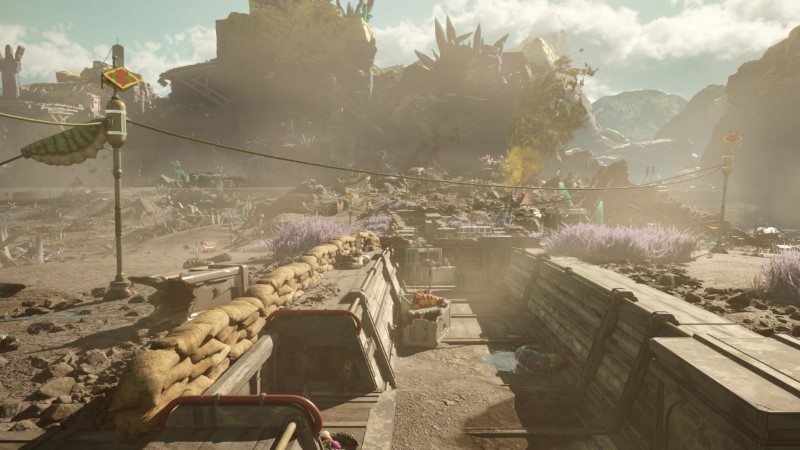
The developers mentioned an “increased focus on action” and it shows. Don’t worry, though: it hasn’t turned into a mindless shooter. Far from it. It’s just that when fights break out, it feels more fluid and fun than before. I actually look forward to combat encounters now, whereas in the original I sometimes tried to avoid fighting if I could (especially in the early game).
Companion abilities also add a nice tactical layer (as in, you can combo their special moves with your own). For example, I love having Marisol freeze a tough enemy so I can run up and whack it with a heavy weapon, or timing Aza’s explosives with my grenade toss for a massive boom. It’s very satisfying.
Another big change: you can play in third-person perspective now in addition to first-person. This was something players of the first game asked for (since Fallout lets you toggle views), and Obsidian delivered.
At any time, you can switch to a third-person camera to see your character and surroundings more fully. I’ve found myself swapping views depending on the situation; first-person still feels better for precise shooting, but third-person is great for exploring the environment or during melee combat so you can see enemies around you.
Plus, I admit it’s nice to actually see the cool armor and outfits I put on my character, instead of always just seeing my hands holding a gun. It’s a purely optional thing, but having the choice is great and makes the game more accessible to those who get motion sickness in first-person.
The RPG systems have been deepened in several ways. Remember the Flaws system from Outer Worlds 1? It’s back and more impactful now. In case you’re new: flaws are negative traits your character can choose to accept, usually as a consequence of your actions (like taking a lot of fall damage might offer you a “Fragile Bones” flaw where you permanently take more damage from falls, but in exchange you get an extra perk point).
In the first game, flaws were a cool idea but not always worth taking. In Outer Worlds 2, critics have praised how the flaws system is brilliantly used; there are more flaw options and they integrate into your character build more meaningfully.
I took a flaw that made me occasionally hallucinate (long story, involved an alien fungus…) and it admittedly made some fights harder, but it unlocked a unique perk for extra dialogue options with a certain faction. How neat is that? This kind of trade-off really encourages role-playing.
You can craft a “flawed” character that feels distinct. The game even recognizes some flaws in dialogues, which led to funny moments where NPCs commented on my phobia of heights after seeing me panic near a ledge.
Speaking of perks and skills, the progression has been expanded. There are more perks to choose from, and leveling up companions now unlocks additional companion-specific perks as well. Outer Worlds 2 places a bigger emphasis on companion synergy: if you invest in your crew, you can really amplify your combat strategy.
For instance, one of Valerie’s later perks boosts the whole team’s armor when she’s in the party, and Aza can learn a perk that increases explosive damage for everyone. You can essentially build a team around your playstyle: want to be an unkillable tank squad? Stack defensive perks and bring the right companions.
Prefer a stealthy approach? There are perks and companions to support sneaking and sniping. The flexibility is fantastic, and it scratches that RPG itch of truly customizing your playthrough.
Quest design also deserves mention. Obsidian is known for quality quests and they didn’t slack here. If anything, they got even more ambitious. Many quests in The Outer Worlds 2 have multiple outcomes and can branch in surprising ways. I replayed one early quest with a different character build and was shocked at how differently it turned out because I had an alternate approach available.
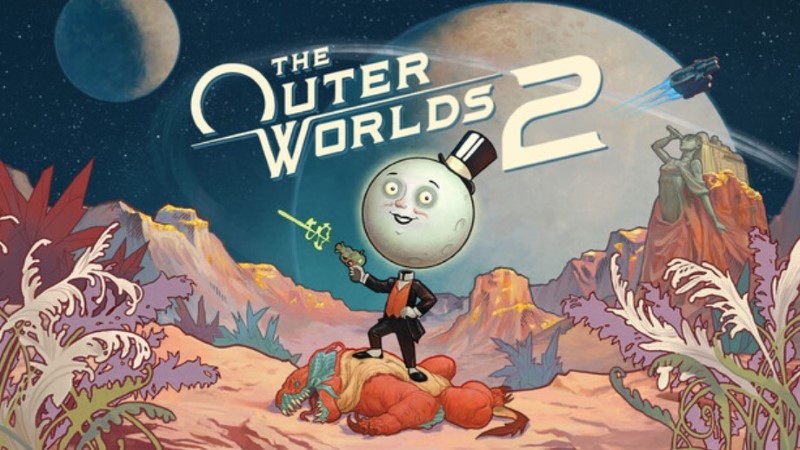
One side mission had at least three distinct ways to resolve a dispute between colonists, and the path I chose ended up unlocking a completely separate follow-up quest line that my friend, who made a different choice, never even saw. We compared notes and were both like, “wait, who is that character you mentioned? I never met them!”
This kind of reactivity is catnip for RPG fans and significantly boosts replay value. It sounds like the devs were perfectly fine with players potentially missing chunks of content based on choices; a sign of confidence that your choices matter.
In a recent interview, the narrative designer even said they’re happy if some players miss entire characters with “thousands of lines of dialogue,” because it means the story can meaningfully diverge. That’s bold, and I respect it.
Exploration is also a step up. The Outer Worlds 2 isn’t a single giant open-world; much like the first game, it’s divided into planetary zones or regions you travel between via your spaceship. But these zones feel larger and more varied now.
Arcadia has multiple planets and moons you’ll visit, from neon-lit urban sprawls to wild alien frontiers. One area, Paradise Island, is a lush resort colony gone feral, where luxury hotels are overrun by monsters. Another zone, Golden Ridge, features canyon landscapes dotted with secret labs and cultist hideouts.
Each area has a distinct vibe and plenty of nooks to discover. I’ve stumbled on unmarked caves with little environmental stories (like finding a long-lost settler’s journal), and there are more hidden side-quests that aren’t immediately given to you. You simply must find them by exploring or talking to locals.
The level design still uses that semi-open approach (it’s not as huge as something like Skyrim), but it definitely feels more expansive than Halcyon did. And yes, you still get to play astronaut and fly between these locations on your ship, the Unreliable (actually, is it still called the Unreliable? Minor detail: the original ship from game one returns!).
Stepping inside the ship gave me a warm fuzzy feeling of nostalgia. It’s been updated a bit, but it serves as your home base once again. You’ll decorate it with knickknacks, chat with companions, and even receive interstellar messages and sidequests while aboard. It’s the little things like this continuity that made me smile as a returning fan.
Technically Speaking…
On the technical side, Outer Worlds 2 looks noticeably better than its predecessor. The game is built on Unreal Engine 5, and it supports high-end features like 4K resolution, ray tracing, and fancy upscaling tech (DLSS/FSR). Visually, it’s still got a bit of that pulpy, slightly stylized art direction. It’s not aiming for hyper-realism but rather a vibrant “space pulp magazine cover” aesthetic.
The improvement in lighting and detail is clear though: neon signs reflect on rain-slicked streets, the wild alien landscapes have more density and life, and character models are more detailed. I especially love the skyboxes on some planets, with swirling cosmic anomalies visible, reminding you that these rifts are ripping the sky open.
Performance-wise, it’s been solid on my machine so far; I have encountered a few minor bugs (like floating objects or a NPC getting stuck in a T-pose once – ah, the joys of launch week), but nothing game-breaking.
The user interface and inventory management got a facelift too, and basically more user-friendly (e.g., comparing item stats is easier, and there are more filters). Load times between areas are also faster if you’re on an SSD or current-gen console, which was one small annoyance in the first game that’s now improved.
Everything Else
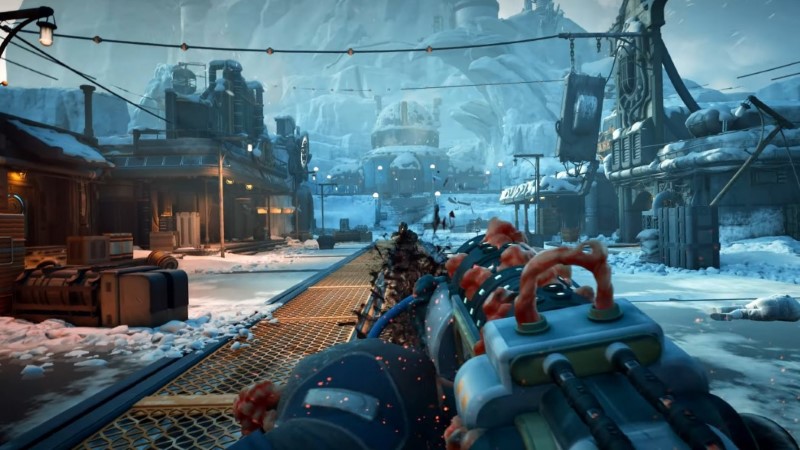
One more thing that stands out: the writing and quest scenarios remain top-notch. Obsidian has a reputation for clever writing, and Outer Worlds 2 maintains that standard. Expect quests that tackle themes of capitalism, morality, and human (or alien) nature, often with a sarcastic twist.
One early quest had me mediating a labor dispute at a factory that was so clearly parodying real-world corporate union-busting, I was equal parts amused and enraged. Another quest line delved into the Order’s “grand plan” philosophy in a way that honestly got me thinking about free will vs. predestination; right before it took a hard turn into absurd humor involving a cult initiation rite with whoopee cushions (I’m not even joking).
The ability to shift from thoughtful to ridiculous and back is something Outer Worlds does excellently, and I’m happy to see it continue. As a player, you also have a ton of dialogue options if your skills permit. Playing a high Persuasion/Science character, I’ve defused several fights just by talking, including convincing one boss to actually stand down because I outsmarted them with technobabble.
On another character, I went low-intelligence just for laughs, and yes, the infamous “dumb dialogue” options are in the sequel too. Choosing the “[Dumb]” tag responses leads to some hilarious moments where your character says something profoundly stupid and everyone reacts in bewilderment. It’s a special kind of entertainment that Outer Worlds has mastered.
How The Outer Worlds 2 Sets Itself Apart from the Original
I’ve touched on a lot of differences already, but it’s worth summarizing how The Outer Worlds 2 distinguishes itself from the first game and evolves the franchise. If The Outer Worlds (1) was a quirky underdog RPG that harkened back to Fallout: New Vegas vibes, then Outer Worlds 2 is like that underdog after a rigorous training montage: more confident, a bit bulkier, and ready to take bigger swings (while still cracking jokes, of course).
One major distinction is scope and ambition. The Outer Worlds 1 was relatively compact; it provided a focused 20-30 hour adventure with a few hub areas. Outer Worlds 2 is noticeably more expansive. The main story alone is around 30-40 hours now (depending on how many sidequests you do), and there are more places to explore. Arcadia’s multiple zones make Halcyon’s locations feel almost quaint.
This sequel isn’t an open-world epic on the level of, say, Starfield, but it feels like a robust, full-sized RPG experience with lots of nooks and crannies. The game also leans more into faction dynamics. The first game had factions (The Board, Groundbreaker, MSI, etc.), but ultimately most things boiled down to pro-Board vs anti-Board outcomes.
Here, with three major factions (Protectorate, Auntie’s Choice, Order) plus subgroups like the cult, the politics are more intricate. I’ve found myself genuinely torn in some quests because the “lesser of evils” isn’t always clear; each side has sympathetic figures and complete jerks. This gives the narrative a greyer tone compared to the more straightforward “corporate bad, rebels good” vibe of the original.
Don’t get me wrong, the sequel still clearly skewers corporate greed and tyranny, but it also isn’t afraid to show the flaws in the “good” factions too. For example, the religious Order opposes the Protectorate (sounds noble) but then you see they engage in some pretty extreme, morally dubious activities of their own. It’s deliciously messy in a way the first game’s conflict wasn’t as much.
Another way Outer Worlds 2 sets itself apart is by addressing feedback from the first game. Many players loved Outer Worlds 1’s storytelling but wanted more depth in quests, more reactivity, and yes, more polished combat.
The devs clearly listened. Reviews from critics consistently mention that Outer Worlds 2 feels like a refined, more confident sequel rather than a radical reinvention. The phrase “bigger and better in almost every way” comes up often, and I concur. The combat and movement being smoother is a big plus (a couple reviewers even said this installment inches the series closer to being the Fallout: New Vegas successor we always wanted).
The branching questlines and robust flaw/choice systems mean it’s more choice-heavy and roleplay-friendly than before. I actually feel like I’m playing a classic Obsidian RPG from their heyday, with all the player agency that entails, something that not many modern RPGs manage, as they often streamline things for mass appeal.
Outer Worlds 2 doesn’t really dumb itself down; if anything, it doubles down on the hardcore RPG elements, which I appreciate deeply as a nerd for this genre.
The sequel also brings a slightly different tone and style. It’s subtle, but I’d say Outer Worlds 2 is slightly darker and more serious in places than the first game, but without losing the humor. This might be reflective of the six-year gap and the world events in between (one preview on Polygon made a point that “our world is scarier now, which Outer Worlds 2 acknowledges without letting up on laughs”).
I definitely felt moments where the satire cut a bit deeper or the existential themes around these rifts made me pause. Then a minute later a character would crack a joke or a ludicrous weapon description would remind me not to take it too seriously.
It’s a great balance, but it does feel like the franchise grew up just a tiny bit. I personally love that; it gives the narrative some weight and makes the funny moments stand out even more against some genuinely poignant or eerie sequences.
From a technical/business standpoint, Outer Worlds 2 also stands apart because it’s now under Microsoft’s umbrella. That means it launched on Xbox Game Pass on day one, which is huge for exposure.
Also, unlike the first game which initially skipped PlayStation (due to exclusivity deals) and came later, Outer Worlds 2 launched simultaneously on PlayStation 5 as well. So everyone gets to join the fun this time around without long waits.
The game even avoided the dreaded price hike that was rumored (there was talk of it being the first $79.99 Xbox game, but they ultimately priced it at the standard $69.99 – still pricey, but at least not more than usual).
These details might not affect gameplay, but they indicate how Outer Worlds has transitioned from a niche AA title to a flagship RPG for Obsidian/Microsoft. In a way, Outer Worlds 2 has a bit more riding on it, and thankfully it seems to be delivering, considering the strong reception.
Early Reception: What Critics (and I) Think So Far
So, how is The Outer Worlds 2 being received now that it’s out? Quite positively! Early reviews and player feedback point to a game that succeeds as a follow-up. Many critics highlight that it’s an improved, more refined version of the original. In other words, exactly what a good sequel should be.
I’ve seen scores around the 8 to 9 out of 10 range from major outlets, which aligns with my own impressions. The praise is centered on the excellent writing, world-building, and the much-enhanced gameplay mechanics.
For example, reviewers are loving the fact that combat feels better and that the game offers so much player choice. One review even said “The Outer Worlds 2 is Obsidian Entertainment’s best work to date: a perfect RPG for those seeking an old-school approach, one with more substance than expanse.” That made me smile, because it captures how this game doesn’t just go bigger for bigger’s sake; it adds substance in the form of deeper RPG elements and story richness.
Critics have also noted that Outer Worlds 2 doesn’t reinvent the wheel, and that’s okay. It sticks to what worked and builds on it. IGN’s review mentioned it “doesn’t try to rewrite Obsidian’s RPG playbook, but it’s another strong refinement,” citing smoother combat, compelling “build crafting” (yes, there’s a lot of fun to be had in optimizing your character), and a story that immediately invited replay to see different outcomes.
I can already attest to that replay urge. I haven’t even finished my first run yet and I’m already planning a second playthrough with a totally opposite character build to see new quest branches. It’s that kind of game.
Of course, no game is perfect, as some critiques have emerged too. A few reviewers found the first act a bit slow or said the main narrative’s climax felt anticlimactic. I can’t fully speak to the ending yet (trying to avoid personal spoilers!), but I did feel the opening hours, while enjoyable, were heavy on setup and a tad less explosive than I expected given how high the stakes become later.
It’s a minor pacing thing. There were also comments about enemy variety (or lack thereof). Indeed, you will fight a lot of familiar creatures and human enemies repeatedly. The bestiary isn’t vastly larger than in game one, though there are a few new beasties and some tougher variants. For me, the combat improvements made that less of an issue, but if you were hoping for dozens of new alien species to fight, temper that expectation.
Interestingly, some reviews had conflicting takes on the companions and choices. One outlet praised the flaws system and called the game a top example of encouraging role-playing freedom. Another loved the quest design but felt the companions were “bland” or the final third of the game lost a bit of the original’s charm.
As someone invested in the characters, I can see both sides: the original Outer Worlds had a certain scrappy charm and novelty that’s hard to replicate now that we kind of know the formula. The sequel is arguably a better game, yet it might not have the same unexpected magic of discovering Halcyon for the first time back in 2019.
Nostalgia is a factor here; I’ll always remember my first time stepping out of the Hope’s crash site and realizing what a satirical ride I was in for. Outer Worlds 2 can’t replicate that first time feeling, but it makes up for it by being a richer experience overall.
And personally, I’ve grown to really enjoy the new companions, even if none have completely stolen my heart the way Parvati did. They serve the story extremely well, and the ensemble as a whole is arguably stronger.
From the technical perspective, I’ve seen some reports of minor bugs (nothing too crazy) and a note that while the game looks good, it’s not pushing any graphical boundaries too far, which honestly, is fine by me. It has a distinct art style and runs well, which I prefer over raw graphical flexing.
The interface got a bit of flak from a couple of PC reviewers who found it clunky, but on my end it’s been alright after tweaking some settings. Maybe it’s an acquired taste.
Overall, the early reception paints The Outer Worlds 2 as a success. It’s being called a confident sequel that is “significantly improved… better than its predecessor in almost every way” (to quote Eurogamer’s impression).
That said, a few voices caution that it doesn’t drastically innovate, as it’s more evolutionary. I think that was expected: fans mostly wanted a bigger Outer Worlds, not a brand new experiment. As long as you set your expectations that this is an iteration, not a reinvention, you’re likely to be very satisfied.
I certainly am. The game has been absorbing my free time, and I foresee multiple playthroughs in my future. There’s something comforting about returning to this style of RPG: it feels both nostalgic and fresh, like meeting an old friend who’s learned some new tricks.
A Stellar Sequel Worth the Journey
I have to say I’m impressed by what Obsidian achieved with The Outer Worlds 2. It had the tricky task of following a beloved cult-classic RPG and making it bigger without losing its soul. And for the most part, it succeeds marvelously.
The game captures the quirky, satirical essence of the franchise while delivering improvements across the board, from gameplay mechanics to narrative complexity. Exploring the Arcadia colony has been a blast; it’s familiar enough to feel like a true continuation of the Outer Worlds universe, yet different enough to keep me intrigued about what’s around the next bend (or rift, as it were).
For fans of The Outer Worlds 1, I think you’ll feel right at home in this sequel. It’s like slipping on a favorite spacers’ leather jacket, except now it’s been reforged with better armor plating and extra pockets full of goodies.
All the things we loved…the player-driven story, the funny/ferocious companions, the offbeat sci-fi lore, the freedom to be a silver-tongued hero or a dumb-as-rocks renegade, it’s all here. And if you were one of those who had a wish list of improvements (better combat, more areas, more quest branching), you’ll be pleased to see many of those wishes granted.
On the flip side, if you didn’t gel with the first game’s style, this sequel likely won’t change your mind, because it proudly carries forward the same DNA.
As for newcomers, don’t be afraid to jump into Outer Worlds 2 even if you skipped the first. The story is standalone, with only the broad setting shared. You might miss a few easter eggs or references to Halcyon and the events of game one (keep an eye out for some cheeky nods. I won’t spoil them, but fans will know when they see certain returning brands or hear a familiar name drop).
But nothing in the plot requires prior knowledge. In fact, some reviews suggested this is the perfect entry point if you want to experience a top-tier Obsidian RPG without going back to older titles. And after playing, I agree; it’s very welcoming to new players, with a solid tutorial and a story that introduces its own world and stakes organically.
From my personal perspective, The Outer Worlds 2 so far has delivered on the promise of “more Outer Worlds.” I find myself thoroughly engrossed, eagerly traveling from one moon to another, juggling faction politics, laughing at the satire, and occasionally pausing to admire a vista of a neon city under a shattered sky.
The game has already given me those memorable RPG moments I live for: like debating philosophy with a zealot in the middle of a gunfight, or stealthily infiltrating a corporate HQ by pretending to be an HR rep (yes, that happened and it was as hilarious as it sounds).
These are the kinds of anecdotes I’ll excitedly share with friends, which to me is a sign of a great RPG…when everyone has their own wild stories of how they tackled a quest or the ridiculous consequences of their choices.
If I have any reservations, they are relatively minor quibbles. Perhaps the main storyline could have a bit more oomph at the very end (again, haven’t finished yet, but a few hints suggest the ending might not please everyone).
And sure, part of me wishes Outer Worlds 2 took one or two more bold risks beyond what it did; maybe a truly new mechanic or an even more drastic narrative branch. But these thoughts only come up because the foundation here is so strong that one can’t help but imagine even more. Importantly, the game feels complete and satisfying on its own.
Also, given there are already two expansions planned (the DLC Pass came with the premium edition), I’m excited that more content is on the horizon. The first game’s DLCs were excellent, so I anticipate Obsidian will have some cool side stories or planets to add post-launch.
In conclusion, The Outer Worlds 2 is absolutely a journey worth taking for any RPG enthusiast, especially fans of space-faring adventures with a satirical bite. It’s a game that had me grinning at its clever writing one moment, then carefully weighing a moral choice the next. It’s got heart, humor, and a whole lot of player-driven chaos.
As a blogger and a gamer, I’m happy to say it lived up to my hopes. I can’t wait to keep playing and see how my story in Arcadia ultimately unfolds, and I’m already pondering who I’ll side with in my next playthrough to witness an entirely different outcome.
Whether you’re here for the narrative, the combat, or just to hang out with a crew of charming oddballs in a cool sci-fi setting, The Outer Worlds 2 has you covered. It’s more Outer Worlds, yes, but also a meaningful step forward for the franchise.
Anyway, I have to get back to Arcadia; Auntie’s Choice just offered me a fat bribe to sabotage a Protectorate base, and Niles is already giving me the side-eye. Decisions, decisions.

